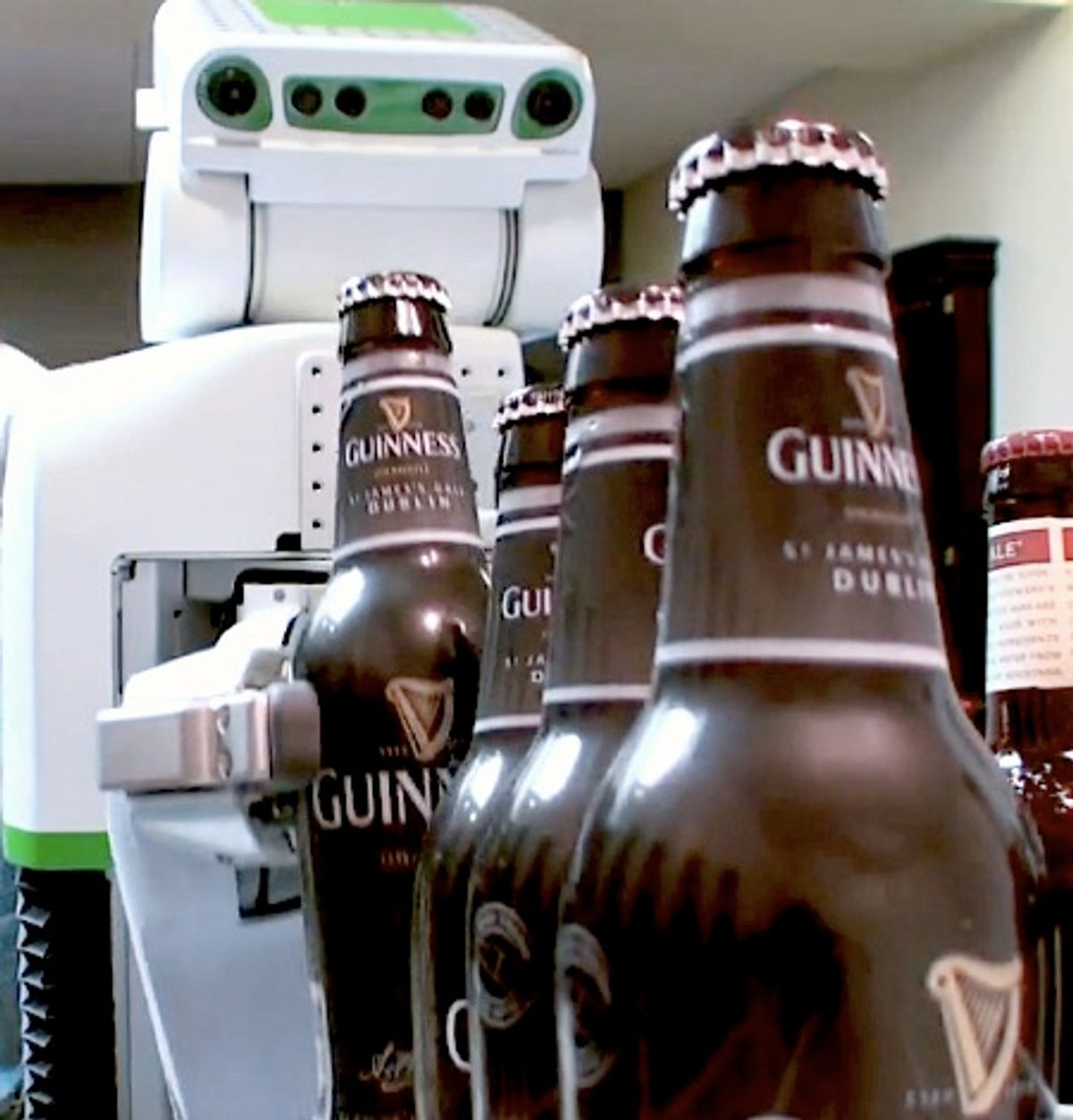Back in 2006, when Bill Gates was making his tear-filled transition from the PC industry into a tear-filled career as a philanthropist, he penned an editorial on robotics that became a rallying cry for… no one. Titled "A Robot in Every Home," Bill Gates highlighted the obvious parallels between the pre-Microsoft PC industry and the pre-anybody personal robotics industry. Industrial use, research work, and a fringe garage hobby. That was the state of the computer industry before Bill Gates and Steve Jobs, and that’s more or less the state of the robotics industry now, five years after Bill’s editorial.
Of course, Bill hasn’t been around to make the dream come true, he’s been busy saving Africa and our public school system and the souls of fellow billionaires. He did leave behind a multi-billion dollar sotware company, however, that is perfectly poised to make "A Robot in Every Home" a piece of fact instead of fiction. Since then, Microsoft’s one major (intentional) contribution to the industry has been the sporadically updated Microsoft Robotics Developer Studio. It’s a good tool for prototyping and simulating simple robotics, but it isn’t moving anything forward. In fact, it treats the robotics industry exactly like computer industry stalwarts treated the burgeoning PC industry: as a hobby. What Microsoft hasn’t been doing over these past years is building a robot operating system, or making an even greater gamble on actual robots themselves.
Oddly enough, Microsoft’s largest contribution to robotics as of yet was largely inadvertent. The Kinect sensor for the Xbox 360 was launched in November of 2010, and was a surprising success with consumers. While normal people snapped up the mysterious sensor by the millions, brought it into their living rooms, and realized how very-out-of-shape they were, pale hobbyists ("hackers," as they’re known these days) quickly sequestered themselves in their garages (circa 2010/2011: poorly heated loft apartments), and taught the Kinect sensor new tricks. The piece of hardware that was originally intended to be a locked down add-on for the 360 became a multipurpose 3D sensor extraordinaire. Microsoft actually issued a mild out-of-touch (and never repeated) threat to the hackers, but the "damage" was done, and hundreds of burgeoning roboticists had a supremely powerful tool in their hands -- and incidentally generated millions of dollars worth of free PR for Kinect with YouTube videos of their exploits.
In 1974, when Intel released the 8080 microprocessor, it wasn’t trying to invent the PC, it was just trying to improve upon its existing, limited 8-bit 8008 chip. It was up to the likes of MITS (the Altair 8800) and Microsoft (Altair Basic) to make good use of it. Clones and successors quickly followed, and Intel has obviously kept up over the years. Perhaps Microsoft would be happy to accidentally spark a robotics revolution with the Kinect sensor, but wouldn’t it prefer to be at the center of it? Besides, Microsoft doesn’t actually build the 3D sensor heart of the Kinect, those honors go to a company called PrimeSense, which is offering the same tech to anyone for a similarly low price.
Someone is going to figure this out. Willow Garage, fueled by some mysterious and apparently inexhaustible venture capital, is taking the open source angle with its ROS (Robot Operating System). The project already has a good amount of traction among bearded hackers and ambitious university robotics programs, since it allows altruistic types to build upon the innovation of others instead of continually "reinventing the wheel" (as Willow Garage puts it) and building their own robot operating system and hardware support from the ground up. Still, while ROS has made great strides and is home to some very exciting innovation -- along with its fair share of Kinect hacks, of course -- it’s nothing a consumer would find useful or even approachable. What the personal computing revolution did was take tools that were already commonplace in the enterprise and hand them to regular cro-mags who wanted to "balance a checkbook" with a spreadsheet application or "word process" without a typewriter ribbon. Microsoft put those tools in the hands of hobbyists, then Apple put them in the hands of regular people, and then Microsoft put them in the hands of everybody.
What we need a Microsoft or a Google or an Apple to do -- or if they won’t do it, Enterprising Upstart X -- is build an operating system that runs on standardized hardware or commodity hardware, with built-in capabilities for doing things that are actually useful for a home user. Buzzing you in when you get locked out, signing for a package, taking that frozen chicken out of the freezer while you’re at work, feeding your pet, and of course the veritable classic of robo-problems: getting you a beer. As simple as these things sound, they’re actually incredibly complex in terms of where general robotics innovation is at currently. That’s why EUX is a longshot, but there’s still room for some barefaced ingenuity. The dawn of the PC was marked by incredible efficiency of code and hardware, techniques that made Bill Gates and Steve Wozniak famous. Currently, the retail robot closest to being able to manage all these tasks is Willow Garage’s PR2, which costs $400,000, harbors two dual-processor Xeon servers (16 cores total) and is still slow as molasses.
Imagine a robot that you could buy at Best Buy for somewhere between $2k and $4k, unbox and configure in half an hour, and then just take for granted as an extremely reliable, whine-free household member for the next few years (or, if you bought it from Apple, exactly 12 months before the upgrade lust sets in). It would change everything. Of course, it sounds preposterous given the current state of this barely-there industry, but it’s going to be a reality within the next decade. Who will get us there first?
Paul J. Miller, a New York-based technology writer, is a former editor at Engadget. This post appeared originally at pauljmiller.com.




